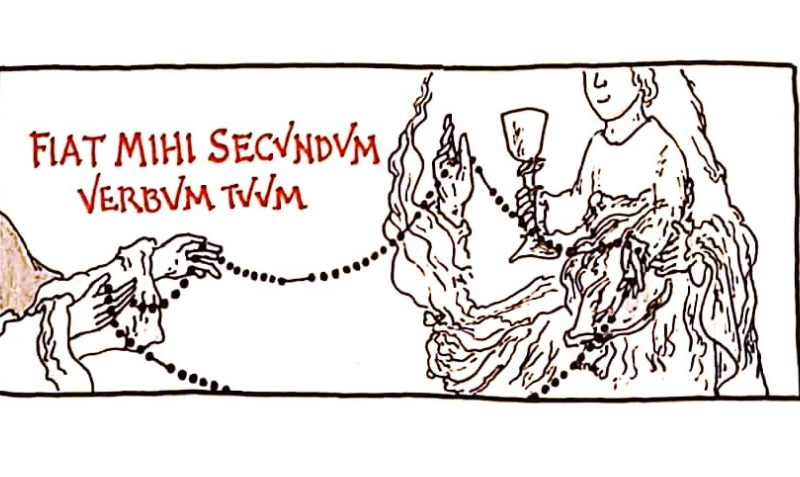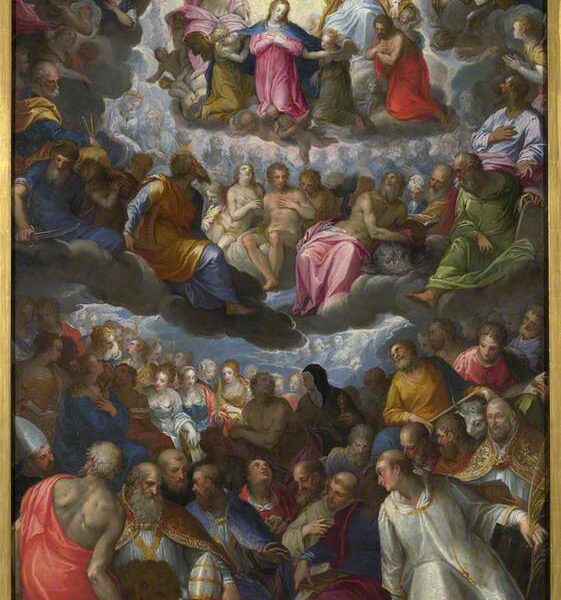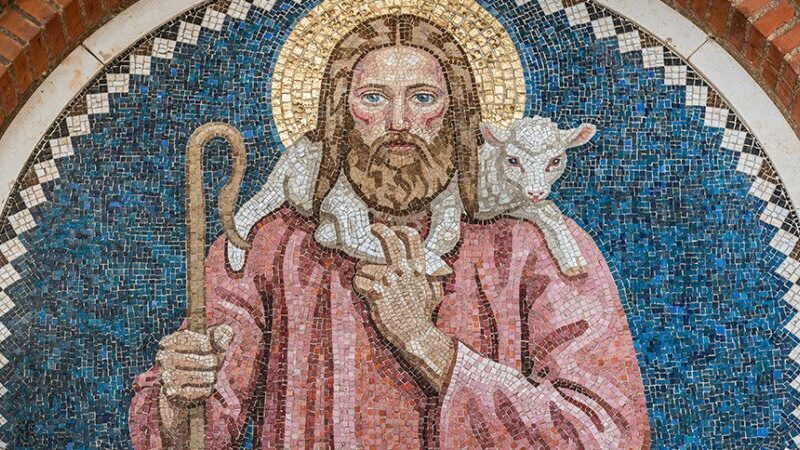
Introduction to the Litany of Loreto
1.89k
Umberto Eco has said that “the list is the origin of culture. It’s part of the history of art and literature. What does culture want? To make infinity comprehensible. It also wants to create order – not always, but often. And how, as a human being, does one face infinity? How does one attempt to grasp the incomprehensible? Through lists…”
This can certainly be said of the kind of prayer that we call a Litany. The word itself comes from the Greek for supplication, and the litany consists of a list of titles and attributes of the person to whom supplication is made. Each time the person is invoked, we respond with a cry of supplication, such as ‘pray for us’, or ‘Lord, have mercy’. As a form of prayer, litanies are a part of the liturgies of the East, and the ‘Kyrie eleison’ in the Roman Mass is one of the oldest forms of the litany in the West. Around the 6th century, there arose the beautiful Akathist Hymn in Constantinople which is made up of a list of titles of the Virgin Mary. With its profoundly Scriptural and Patristic references to Our Lady, it is probably the oldest antecedent to the West’s Litany of the Blessed Virgin Mary.
 This is often called the Litany of Loreto because it was first approved in 1587 for use in the Shrine of the Holy House of Loreto in Italy. However, its origins and development are obscure. Some have claimed that it dates to Pope Saint Sergius I (d.701). As he was from an Antiochene Syrian-rite family, it is possible that he was acquainted with the Akathist Hymn, and subsequently introduced its invocations of the Virgin Mary to the West. Historians, however, give the Litany of Loreto a later date in the late 15th or early 16th century. Whatever its origins, and I think much can be said for its link to the Byzantine tradition, it gained great popularity in the West because of its connection to the beloved shrine of Loreto.
This is often called the Litany of Loreto because it was first approved in 1587 for use in the Shrine of the Holy House of Loreto in Italy. However, its origins and development are obscure. Some have claimed that it dates to Pope Saint Sergius I (d.701). As he was from an Antiochene Syrian-rite family, it is possible that he was acquainted with the Akathist Hymn, and subsequently introduced its invocations of the Virgin Mary to the West. Historians, however, give the Litany of Loreto a later date in the late 15th or early 16th century. Whatever its origins, and I think much can be said for its link to the Byzantine tradition, it gained great popularity in the West because of its connection to the beloved shrine of Loreto.In 1615 the Dominican General Chapter asked that the Litany of Loreto be recited on Saturdays after the Salve Regina sung at the end of Compline in all the convents of the Order. The custom of reciting this litany on Saturdays, particularly after the Rosary, is derived from this tradition of the Order. The popularity of litanies in people’s devotional life has waned, but they should not be neglected. These titles reward reflection and meditation because they contain a richness of theology and, as a list, invite us to grasp the incomprehensible and to contemplate the infinite mystery of God’s plan of salvation.
Therefore, Godzdogz is happy to offer, between now and the beginning of Lent, a series of meditations on the Litany of Loreto. We hope you will visit us often over the next couple of months as together we re-discover this ancient form of prayer.


